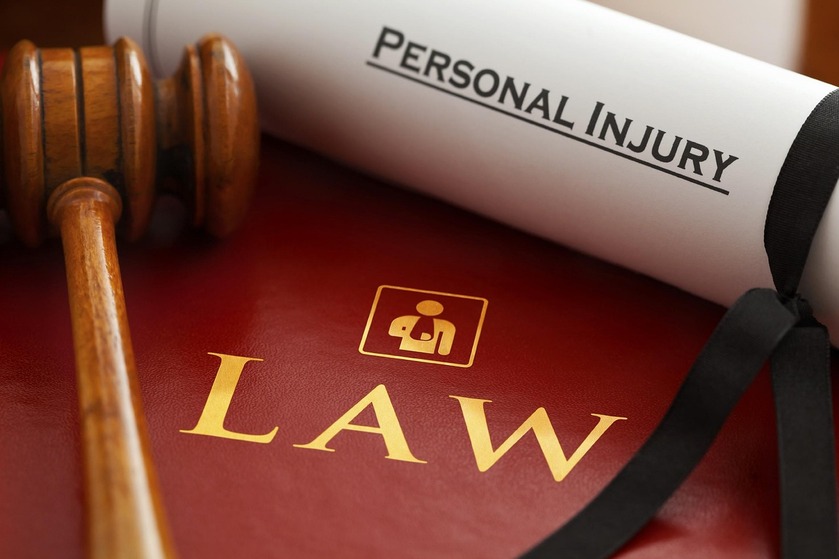Suffering an injury due to someone else’s negligence can be a life-altering experience. In the aftermath, victims are often left dealing with physical pain, emotional trauma, financial strain, and a maze of legal questions. Personal injury law provides a path toward justice and compensation, but navigating that path requires a clear understanding of your rights, legal processes, and how to effectively advocate for yourself or with the help of a skilled attorney.
Understanding the Foundations of Personal Injury Law
What Is a Personal Injury Case?
A personal injury case arises when a person suffers harm from an accident or injury, and someone else might be legally responsible for that harm. The purpose of personal injury law is to allow the injured party to receive financial compensation for losses suffered due to another's actions or negligence.
Common examples of personal injury claims include:
Car and truck accidents
Slip and fall incidents
Medical malpractice
Product liability
Dog bites
Construction site accidents
Assault and battery
The Legal Basis of a Personal Injury Claim
For a personal injury claim to succeed, four primary elements must be proven:
Duty of Care: The defendant had a legal obligation to avoid causing harm.
Breach of Duty: The defendant failed to meet their duty of care.
Causation: The breach directly led to the injury.
Damages: The plaintiff suffered measurable losses.
These elements form the backbone of any personal injury case and are critical for establishing liability and justifying compensation.
The Critical Role of Medical Care in Your Case
Seeking Immediate Medical Attention
Immediately after an accident, the first step should always be seeking medical attention, even if injuries seem minor. Adrenaline can mask pain, and some injuries (like concussions or internal bleeding) may not manifest symptoms right away. Medical professionals not only provide necessary treatment but also create records that serve as vital evidence.
Long-Term Medical Documentation
Recovery from injuries often requires ongoing treatment. Keeping comprehensive records of all treatments, prescriptions, physical therapy sessions, and follow-up appointments helps establish the scope and impact of the injury. This documentation is essential when calculating the compensation you may be entitled to.
You can explore more about injury-related healthcare systems through Wikipedia’s Health Care, which provides a global perspective on healthcare access and systems.
What to Do Immediately After an Injury
Document the Scene and the Incident
Gathering evidence as soon as possible is crucial. Use your smartphone to take photos or videos of the accident scene, any hazards that contributed to the incident, and visible injuries. If there are witnesses, obtain their contact information and any statements they are willing to provide.
File a Report
Depending on the nature of the incident, it may be necessary to file a police report or report the incident to a property owner or employer. Official reports bolster your claim and serve as an independent record of what happened.
Keep a Personal Injury Journal
A personal injury journal can serve as both a therapeutic outlet and legal evidence. Document how you feel daily, physical symptoms, emotional struggles, and the ways in which the injury affects your work, relationships, and daily routines.
Building a Compelling Case
Understanding Economic and Non-Economic Damages
Personal injury damages fall into two broad categories:
Economic Damages: These are tangible financial losses, such as:
Medical expenses
Lost wages
Future earnings
Property damage
Non-Economic Damages: These are intangible losses that include:
Pain and suffering
Emotional distress
Loss of consortium
Reduced quality of life
In particularly egregious cases, punitive damages may be awarded to punish the defendant and deter similar behavior in the future.
Gathering Supporting Evidence
A well-documented case often includes:
Medical records and bills
Accident reports
Photographic or video evidence
Witness statements
Expert testimony (e.g., medical professionals, accident reconstructionists)
Employment records to show lost wages
Calculating a Fair Settlement Value
Determining the value of a personal injury case requires a combination of documentation, legal experience, and often, expert evaluations. Attorneys will consider current losses, future financial impact, and legal precedent when calculating a fair settlement offer.
The Role of the Insurance Company
What Insurers Will and Won’t Do
Insurance companies are businesses aiming to protect their bottom line. Their goal is to settle for as little as possible. Adjusters may use strategies such as:
Requesting recorded statements (that can later be used against you)
Offering quick, lowball settlements
Delaying claims to pressure you financially
An experienced personal injury lawyer will shield you from these tactics and negotiate on your behalf for fair compensation.
The Value of Legal Representation
A competent attorney can make a significant difference in the outcome of your case. A lawyer understands the complexities of the law, anticipates defense strategies, and can elevate your case through compelling arguments and evidence presentation. One such experienced firm is Perkins Law, known for effectively advocating on behalf of injury victims and securing favorable outcomes.
When a Lawsuit Becomes Necessary
Filing the Lawsuit
If a fair settlement cannot be reached, filing a lawsuit may be necessary. Your attorney will prepare the complaint, serve the defendant, and begin the discovery process. This includes exchanging evidence, deposing witnesses, and potentially bringing in expert testimony.
Pre-Trial Proceedings and Settlement Discussions
Most personal injury cases settle before trial. Mediation or arbitration may be pursued as a less adversarial and costly alternative to courtroom litigation. If the case does go to trial, a judge or jury will determine the outcome based on the evidence presented.
Statutes of Limitations
Each state has a statute of limitations for filing personal injury lawsuits, often ranging from one to three years. Missing this deadline can result in losing your legal right to pursue compensation, no matter how valid your claim may be.
Choosing the Right Personal Injury Attorney
What to Look For
When seeking legal representation, consider the following attributes:
Specialization in personal injury law
Years of experience and case results
Positive client reviews and testimonials
Transparent fee arrangements
Strong communication skills
Ensure the attorney is someone you feel comfortable working with, as the case may take months or even years to resolve.
Additional Resources
Online directories and legal review platforms can help you vet attorneys in your area. One notable example is Jonathan Perkins Injury Lawyers, recognized for their commitment to justice and client satisfaction.
Life After a Personal Injury Case
Financial and Emotional Recovery
Securing compensation can significantly alleviate the financial burden of an injury. However, emotional healing is equally important. Support groups, therapy, and reconnecting with your community can help you regain control and rebuild your life.
Preventing Future Injuries
Many personal injury victims become advocates for change, working to improve workplace safety, driver awareness, or product regulations. Use your experience to help prevent others from suffering similar harm.
Final Thoughts: Your Journey to Justice
The journey through a personal injury case is rarely easy. It demands patience, persistence, and informed decision-making. By understanding your rights, acting promptly, and working with a knowledgeable attorney, you place yourself in the best possible position to obtain fair compensation.
Whether your case involves a minor accident or a severe injury, the road to justice begins with one step: deciding to fight for what you deserve. And with the right support behind you, that road can lead to healing, accountability, and financial peace of mind.




















